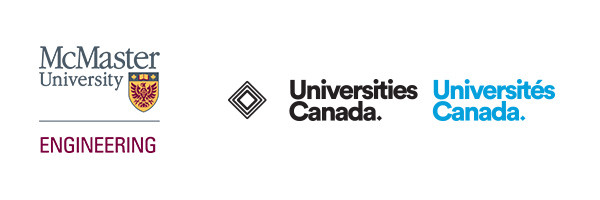Blog /
Policy Matters: Investing in the Next Generation of Skills and Technology for the Future of Mining
Policy Matters: Investing in the Next Generation of Skills and Technology for the Future of Mining
Now is the time to invest in Canada’s research ecosystem to support the talent and technology needs of all Canada’s emerging sectors, especially critical minerals.


Critical minerals are a group of 31 minerals identified by the government of Canada as playing an essential role in priority supply chains and essential economic green growth. These critical minerals represent significant economic potential in the billions of dollars, greater energy independence for Canada, and opportunities for reconciliation with Indigenous communities upon whose land many of these projects will take place.
But if Canada is to realize its vast potential and become a global leader in critical minerals, we have to start investing in our future now. While the Government of Canada has outlined an ambitious Critical Minerals Strategy, they have not laid out a focused plan to develop the top tier research talent we need to be successful. Now is the time to invest in Canada’s research ecosystem to support the talent and technology needs of all Canada’s emerging sectors, especially critical minerals.

Why Research and Development Matters
Investing in research and development is integral to equipping, attracting, and retaining talent and driving the innovation that allows Canada to stay competitive in a global market. Without sufficient investment in research and development, companies and countries face economic decline.
Unfortunately, this is what’s happening in Canada. In Q3 of 2023, GDP fell by 1.1% annualized. Instead of the expected post-pandemic productivity increase, our productivity has dropped to 2016 levels. And out of our fellow G7 countries — five of which outrank us in productivity — we are last in terms of percentage of GDP spent on research and development.
If Canada is to remain economically prosperous — and there’s no reason we shouldn’t given our natural wealth that extends beyond critical minerals — we need a research and development ecosystem that supports the talent and technology that can respond to urgent and emerging issues and areas of opportunity for economic growth.

The Feedback Loop Between Talent and Technology
As Canada is experiencing a labour shortage across all sectors, the competition for highly skilled talent is fierce.
In the mining industry, Canada’s leading companies are trying — and struggling — to recruit for jobs that require advanced skillsets (like chemists, engineers, and geologists) at the same time as industries like aerospace and automotive. This makes the need for sustained research investment even more essential as there is no surplus of highly qualified talent sitting around waiting.
But if we want Canadians to fill these critical roles, we need to build our domestic research capacity by recruiting the top faculty from around the world to train the next generation in our universities — which is exactly what our competitors are doing.
Canada’s wellbeing, prosperity, and global competitiveness will hinge ever more on how well we can nurture and empower our talented minds.
Report of the Advisory Panel on the Federal Research Support System
To prevent falling any further behind, Canada needs to fund robust opportunities for graduate and post-doctoral researchers through scientific grants and scholarships. Even if future industry professionals only have an undergraduate degree, it is still attained by training with faculty whose research is funded by grants.
By increasing support for research talent through grants and scholarships, the government can make it a more attractive proposition to get a master’s degree or doctorate in an area that will ultimately support the mining sector. Additionally, government should provide investment for graduate students to connect and network within the mining industry to better plan their studies around their workforce goals.

University-Led Innovation
Canada is a leader in mining technology, but to maintain that lead, we need university-driven innovation — like what’s happening at McMaster University.
McMaster is pioneering research that has the potential to make mining more sustainable and productive while also providing benefit to local communities. The University is a leader in vehicle electrification as well as vehicle and equipment automatization, the combination of which will lend itself to mining companies, allowing them to take lucrative risks underground without putting miners in harm’s way. This important work is made possible through research and development grants.
McMaster has also partnered with a supplier to develop a private 5G network, which has potential to connect remote mines to the outside world and give them the ability to distribute large amounts of data quickly, increasing the safety of people and the environment. The added benefit of this kind of high-speed connectivity is that it’s not limited to the mine but can be extended to local communities.
But new technology will require the people who have the skills to deploy, fix and manage it effectively. As it is the graduate and postdoctoral researchers who will design and deploy the technology that will drive innovation in the largely fragmented mining industry, Canada can spark the sector’s green transition and open up careers that rival competing sectors by creating more opportunities for advanced research.

The Current State of Canada’s Research and Development Ecosystem
In late 2022, the Government convened an Advisory Panel on the Federal Research Support System to provide recommendations on how to modernize the government’s support for academic research, with a stated goal of better supporting the full spectrum of talent Canada needs.
The panel’s report, released in 2023, found that “A coordinated and agile federal support system that is equipped to respond to the needs of the modern research enterprise as well as emerging government priorities would provide great benefits to all Canadians. That said, success in science, research and innovation that is competitive on the global stage hinges first and foremost on being able to effectively support and retain Canada’s top research talent and build a research enterprise that fosters discovery of new knowledge through investigator-initiated research.”
The report also concluded that the current research and development ecosystem lacks sufficient coordination making it difficult for our science and research community to work toward common strategic objectives and for us to stay on par with our competitors, who are investing heavily in their own research and development.

Looking Ahead
Canada is at cross-roads. It’s apparent that we can’t reach our full potential without new technology and a skilled and highly educated labour force, both of which depend on a robust and specialized research and development strategy. Investing in and strengthening the federal research support system matters immensely for Canada’s critical minerals sector.
To transform our critical minerals and larger mining industry into a global powerhouse, one that adds value to our economy, we have to respond to the investments and innovation happening in other countries. If we don’t get moving, we’re going to be left behind.
This Policy Matters was written in collaboration with McMaster University and Universities Canada, members of the Canadian Chamber’s Critical Minerals Council.

Other Blogs

Policy Matters: What Does the U.S. Have to Do with Canada’s Manufacturing Sector?

Why Mining Companies Have Become More Sustainable and Inclusive to Stay Relevant




